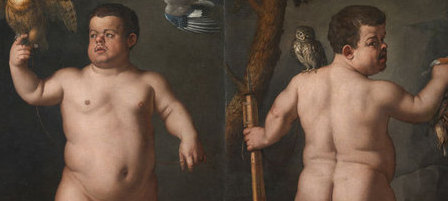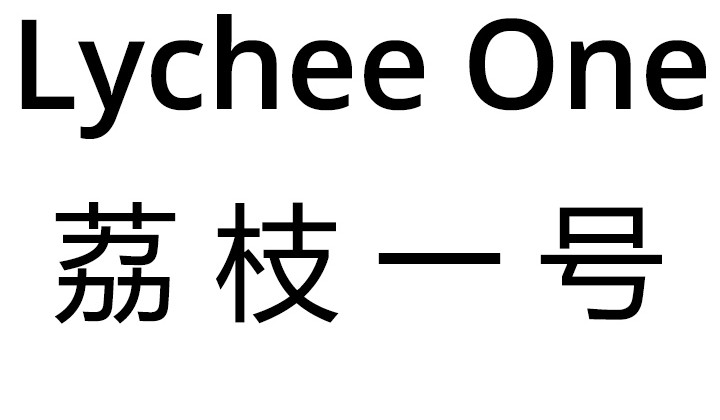Àngels Miralda Tena
‘On Translation: The Originality of Interpretation’
Originally published in Prova: Humanities Research Journal
October 2013, Royal College of Art

Lisa Oppenheim, Cathay, 2010, synchronized double 16mm film projection, 7.5 minutes, dimensions variable (film stills) Image courtesy of Galerie Klosterfelde.
In 1915 Ezra Pound published Cathay1, a series of poems translated from Chinese to English that were praised for their poetic qualities and admired by the Anglophone public. However, Pound did not know Chinese characters and took most of his information for the translation from the notes of Ernest Fenollosa, who theorized that each Chinese character represented an image rather than a phonetic sound. The title of “translation,” based on a loose definition and experimental research became a subject of discussion on the merits of his piece as a linguistically valid work. Regardless, experts in East Asian studies recognize that the poems must be read for their poetic value and that Pound had the clairvoyance to understand the core concerns of the original poems while forming words and phrases from his own practice.
While criticized as bad translation, the series of poems is undoubtedly the most original ‘translation’ of Li Bai’s eighth-century poems and takes the words into new thoughts, including reflections on the recent events of the First World War.2 That these short pieces were praised in England has to do with Pound’s own prowess as a poet rather than any truth in translation, they gained a life of their own, they gained value solely as an ‘interpretation.’ This kind of work is neither translation nor original poetry, it lies somewhere in between, and it produces an extreme example of the creative act that translation is. There can be no translation without a prior interpretation by the translator, for it is impossible to be true to an original when changing its medium of language.
In Jorge Luis Borges’ short satire Pierre Menard, Author of the Quixote3, the impossibility of translation surfaces. Menard attempts to create the most accurate translation of the Quixote and in this attempt, experiences the ridiculous game of becoming Cervantes and becoming fluent in seventeenth century Spanish. As he discovers “To compose the Quixote at the beginning of the seventeenth century was a reasonable undertaking, necessary and perhaps even unavoidable; at the beginning of the twentieth, it is almost impossible. It is not in vain that three hundred years have gone by, filled with exceedingly complex events.” The final product is the Quixote written again word for word. The meaning however is still seen to fluctuate; the act of writing it in the 20th century as opposed to the 17th, regardless of the identical script, changes the meaning of words. The inevitable passing of history morphs language in its drift of time.
Where is the line drawn between interpretation and translation? Each act of translation requires interpretation of the original text. What parallels can be drawn between translation and visual arts if we think of language as medium? In Roman Jakobson’s seminal text On Linguistic Aspects of Translation4 he treats each language as a medium so that meaning can only be translated based on the mutual translatability5 of languages and other sign systems, so that in the same register as translations from one language to another, we could place the example of the Renaissance paragone or the translation of poetry into painting. During this famous debate, artists would compete to show the strengths of their own medium. The competition was between painting, poetry and sculpture, which was more appropriate for depicting a likeness, or a battle? Leonardo Da Vinci’s Codex Urbinas is a defense of painting as the supreme art. Sculpture, according to Leonardo was more of a physical labor than painting which required a more steady mental labor. Painting, which presented facts with immediacy and detail also excelled over the less honest form, poetry.
Painting is a poem that is seen and not heard, and poetry is a painting that is heard and not seen. So these two poems, or paintings so to speak, have exchanged the senses by which they should penetrate the intellect. For if both are painting, both pass to the senso comune by the most noble sense, which is the eye. And if both are poetry, they have to pass [there] by the less noble sense, which is [the sense of] hearing. So we will let painting be judged by a man born deaf, and poetry be judged by one born blind. And if a painting is figured with movements appropriate to the mental accidents of the participants, without any doubt the man born deaf will understand the workings and the intentions of the participants in every case, but the man born blind will never understand anything that the poet demonstrates.6

Bronzino, The Dwarf Morgante, 1550
From this came several attempts to reconcile the virtues of different arts including Bronzino’s Dwarf Morgante whose canvas acts as a sculpture. Both sides remain visible and show the ‘nano’ from front and back. For Jakobson, translation between mediums is a primary act of communication and spreads across an infinite board of sign-systems whether verbal or symbolic.
Thus, when Derrida comments on vision as veil, he likens it to translation: “In its received truth, translation bets on a received truth, a truth that is stabilized, firm and reliable (bebaios), the truth of a meaning that, unscathed and immune, would be transmitted from one so-called language to another in general, with no veil interposed, without anything essential sticking or being erased, and resisting the passage.”7 In this text the veil refers to the tactile veil of vision, when referred to translation, interpretation becomes a non-linguistic form of subjectivity or reception.
The inevitable shift in meaning based solely on authorship and time of the text means not only that the author will have a subjective view of the text based on his own readings and that it will be subject to a different critique by the audience. Jakobson divides translation into three categories, only one of which is the traditional language-to-language modification. The first is intralingual which is precisely an interpretation or rewording of a text in the same language. The second is interlingual, binging a text from one language to another. The third is intersemiotic or the transmutation of verbal signs into nonverbal signs or vice versa. Translation from the verbal to the non-verbal is one among the three categorizations of translation through interpretation.
When translating from the verbal to the non-verbal, what implications are there on mutual translatability? In the example of paragone visual mediums were translated into other visual mediums, tracing subjects from painting to sculpture. If we use Fenollosa’s belief that Chinese characters were in fact visual signs rather than linguistic signs, we follow that Cathay’s translation was an intersemiotic translation from the visual to the verbal. The mutual untranslatability, the distance in understanding between these characters and the letters of the English language therefore gave Pound a greater ability to experiment with interpretation as the embellishment of characters was present only visually in a way unknown to the Anglophone understanding, leading to a need for embellishment within language.
In 2010 Lisa Oppenheim took up the themes of this episode in the history of translation into our own time with her a work also titled Cathay.8 Oppenheim translates from the verbal to the visual, from the 8th and 20th century to the 21st, from a romanticized version of Chinoiserie to the lived reality of New York’s Chinatown (a meeting point between Cathay’s cultures in itself). Structurally, she positions Pound’s translation of Cathay next to a translation made by experts in East Asian languages, thus revealing the differences between the two methods by placing the two outcomes side by side. Oppenheim never allows the viewer to see the texts side by side however; she interprets them herself by filming scenes to represent phrases. The matching up of these scenes to the corresponding translation creates a mental relay in the spectator who aims to piece together the original poems.
The tradition of Chinese characters was considered its own art, the visuality of characters is unmistakable, but Fenollosa heightened the importance of these qualities so that the idea that Pound’s translation likens itself to a visual interpretation. Oppenheim ‘untranslates’ in this sense from Pound’s text into visual markers. Like the characters themselves she creates short unconnected images that build upon each other. Of course, for each phrase there are many possible visual interpretation and signifiers. Here the possible is the important aspect of interpretation, as with mutually untranslatable mediums there are countless imperfect translations that can appear in place of each other.
The specific location of Chinatown is where the translation meets, where one culture touches another. The images mix, a ‘spinning disc’ becomes a CDROM unattached to culture, universal. But the moon becomes a streetlamp, iridescently illuminating a city made of artificial lights. Here the 8th century poems take on a meaning for our century in which interpretation visually no longer has access to original meaning. Our conception of a “spinning disc” is one framed by our own understanding of the world and what image would have emerged from Li Bai’s imaginative is left unknown.
It is never revealed which side is Pound’s, we are never told which side to trust. Simply, we can only gain some sort of relative understanding in the difference between translations. As the images slowly shift from side to side we associate phrases with chosen images and must learn to translate through memory and image.
Each comparison lasts only a few seconds and repeats after going through the entire poem taking over 7 minutes. It is nearly impossible to match up each pair of phrases from memory and so an aporia persists through the repeated screening. This is the veil of Derrida, the smooth transition between texts is jolted through the structure of the film. Incapable of matching slides together we must resign to appreciating the slides on their own for their formal or aesthetic qualities and seemingly aleatory matchings. And so, like Menard, Oppenheim recreates exactly the ‘translation’ methods of Ezra Pound.

Lisa Oppenheim, Cathay, 2010, synchronized double 16mm film projection, 7.5 minutes, dimensions variable (film stills) Image courtesy of Galerie Klosterfelde.
Notes:
1. Ezra Pound, Cathay, University of California Digital Library, http://archive.org/stream/cathayezrapound00pounrich#page/8/mode/2up (Accessed 8 July, 2013)
2. Hugh Kenner, The Pound Era, University of California Press, Berkeley, CA. 1971. In his chapter “The Invention of China” Kenner expounds precisely the invention that translation is, the impossibility of the copy and the pronounced subjectivity of the author.
3. Jorge Luis Borges, Pierre Menard, Author of the Quixote, University of Washington Digital Archives, http://courses.washington.edu/art361a/readings/ (Accessed 8 July, 2013)
4. Roman Jakobson, On Linguistic Aspects of Translation, http://culturalstudiesnow.blogspot.it/2011/10/roman-jakobson-on-linguistic-aspects-of.html (Accessed 20 July, 2013)
5. Mutual translatability requires two languages to be studied to see their compatibilities in meaning. While some single word examples exist, such as the Russian word “сыр” which means fermented cheese (excluding cottage cheese) other languages eliminate gender or numerical functions.
6. Claire J. Farago, Leonardo Da Vinci’s Paragone: A Critical Interpretation with a New Edition of the Text in the Codex Urbinas, Brill’s Studies in Intellectual History, E.J. Brill, Leiden. 1992. (pp. 215)
7. Jacques Derrida and Helene Cixous, trans. Geoffrey Bennington, Veils, “Cultural Memory in the Present,” Stanford University Press, Stanford, CA. 2001.
8. Lisa Oppenheim, Cathay, 2010. synchronized double 16mm film projection, 7.5 minutes, dimensions variable.
